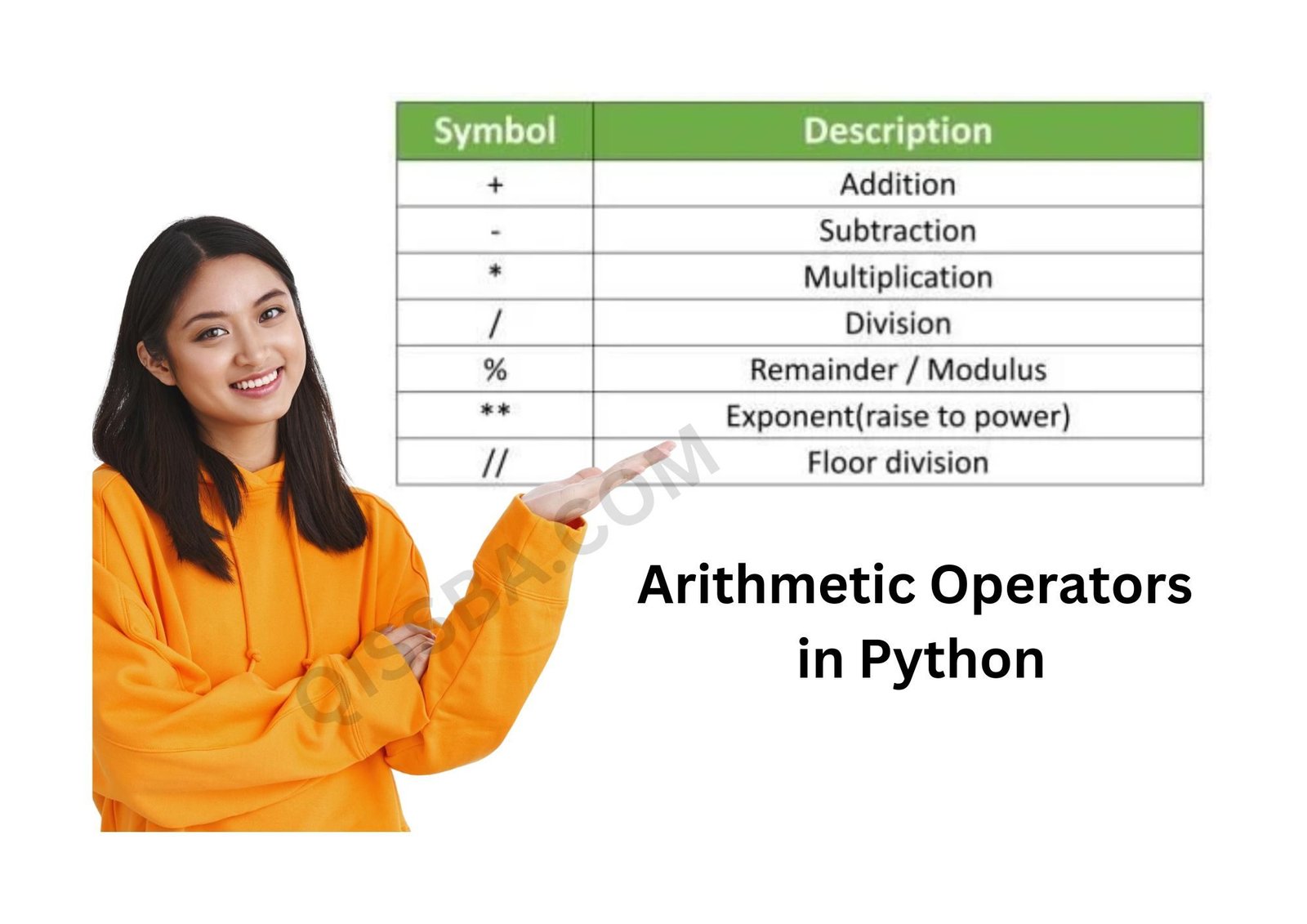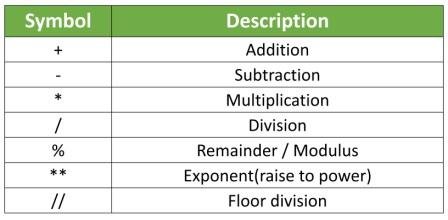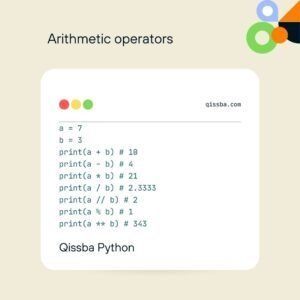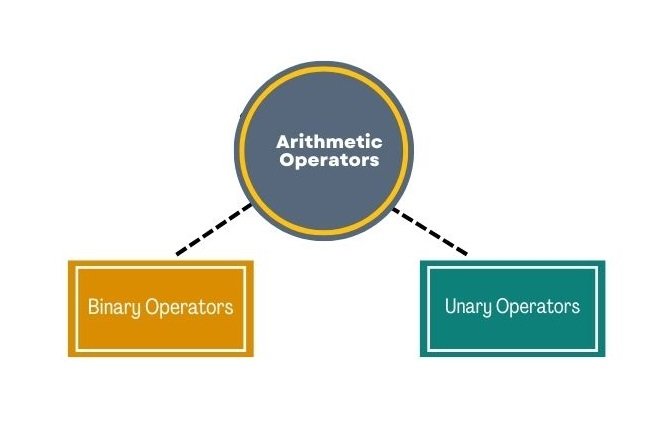
Arithmetic Operators in Python | CBSE – class 12
When we required to perform mathematic calculation through a python program. Python provides some arithmetic operator to be used for this type of basic mathematic calculation, these operators are called arithmetic operator in python programming language.
List of common arithmetic operator in python

Let’s see the list of Arithmetic Operators with basic calculations that python provides.
- Addition (+) : Adds two numbers.
- Subtraction (-) : Subtracts the second number from the first.
- Multiplication (*) : Multiplies two numbers.
- Division (/) : Divides the first number by the second.
- Floor Division (//) : Divides and returns the largest integer less than or equal to the result.
- Modulus (%): Returns the remainder of division.
- Exponentiation (**) : Raises the first number to the power of the second.

All of these arithmetic operators python are binary operators it means these operators always required at least two values (operands) to be calculated, for final output
For technically speaking, we can say
Arithmetic operator in python are those which can perform mathematical operations on operands.
Apart from these binary operators, python provide two unary operators which can perform calculations only on one operand (value).
Type of arithmetic operators in Python
After the above discussion, we can categories the arithmetic operator in following two categories
- Binary operator
- Unary operator

——————————————————————————————————————————————–
Exam Time
——————————————————————————————————————————————-
Chapter : Using Python Libraries
Important questions Asked in examinations of CBSE Class 12th Computer Science
Important questions
Q-1. what are arithmetic operators in python?
Q-2. List of arithmetic operators in python .
Q-3. Arithmetic Operator in Python with example ?
Q-4. how many types of operators used in python?
Read More
- Binary operator
- Unary operator
- operators in python
- relational operators
- logical operators
- assignment operator
- augmented assignment operators
- identity operators(is, is not)
- membership operators(in, not in)


